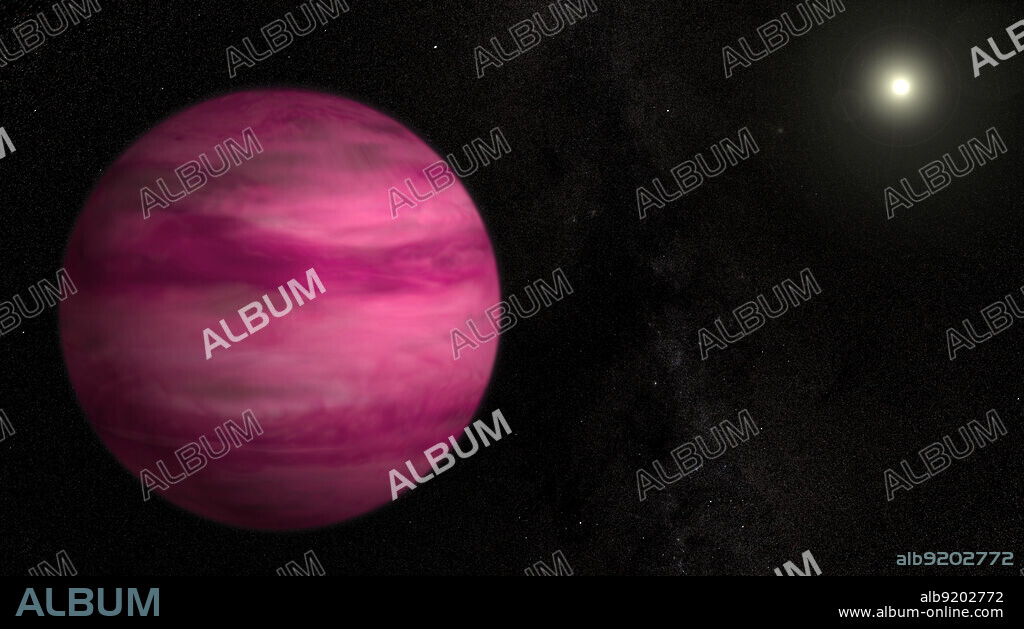alb9202772
Exoplanet GJ 504b

|
Ajouter à une autre Lightbox |
|
Ajouter à une autre Lightbox |



Avez-vous déjà un compte? S'identifier
Vous n'avez pas de compte ? S'inscrire
Acheter cette image

Titre:
Exoplanet GJ 504b
Légende:
Voir la traduction automatique
Glowing a dark magenta, the newly discovered exoplanet GJ 504b weighs in with about four times Jupiter's mass, making it the lowest-mass planet ever directly imaged around a star like the sun. Using infrared data from the Subaru Telescope in Hawaii, an international team of astronomers has imaged a giant planet around the bright star GJ 504. Several times the mass of Jupiter and similar in size, the new world, dubbed GJ 504b, is the lowest-mass planet ever detected around a star like the sun using direct imaging techniques. "If we could travel to this giant planet, we would see a world still glowing from the heat of its formation with a color reminiscent of a dark cherry blossom, a dull magenta," said Michael McElwain, a member of the discovery team at NASA's Goddard Space Flight Center in Greenbelt, Md. "Our near-infrared camera reveals that its color is much more blue than other imaged planets, which may indicate that its atmosphere has fewer clouds." GJ 504 b is a Jovian planet in the system of the young solar analog 59 Virginis (GJ 504). Release date August 2, 2013.
Personnalités:
Crédit:
Album / NASA/Goddard/Scott Wiessinger / Science Source
Autorisations:
Modèle: Non - Propriété: Non
Questions sur les droits?
Questions sur les droits?
Taille de l'image:
Pas disponible
Taille d'impression:
Pas disponible
Mots clés:
21E SIECLE • ANNEES 2010 • ARTISTE • ARTISTEL • ARTSTE • ASTRONOMIE • ASTRONOMIE: PLANETES • COSMOS • GAZ • GRAPHIQUE • ILLUSTRATION • JOVIANO • PLANETE • PLANÈTES • SCIENCE: ASTRONOMIE • XXIE SIECLE
 Pinterest
Pinterest Twitter
Twitter Facebook
Facebook Copier le lien
Copier le lien Email
Email
